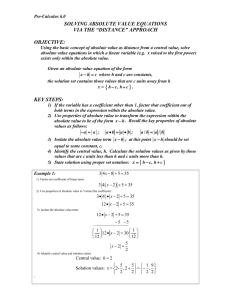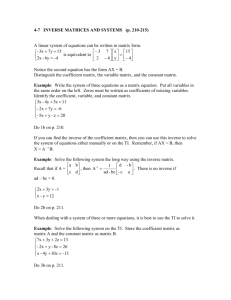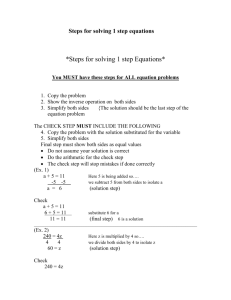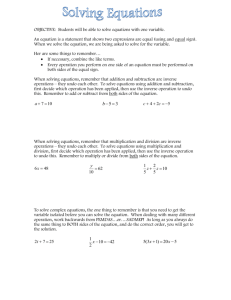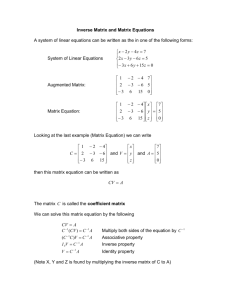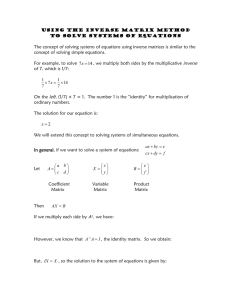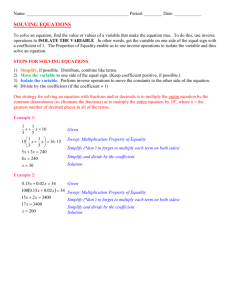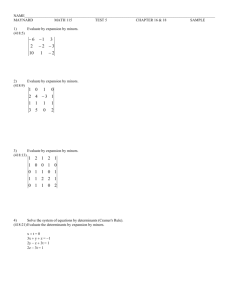Pre Algebra - Notes - Solving Special Equations
advertisement
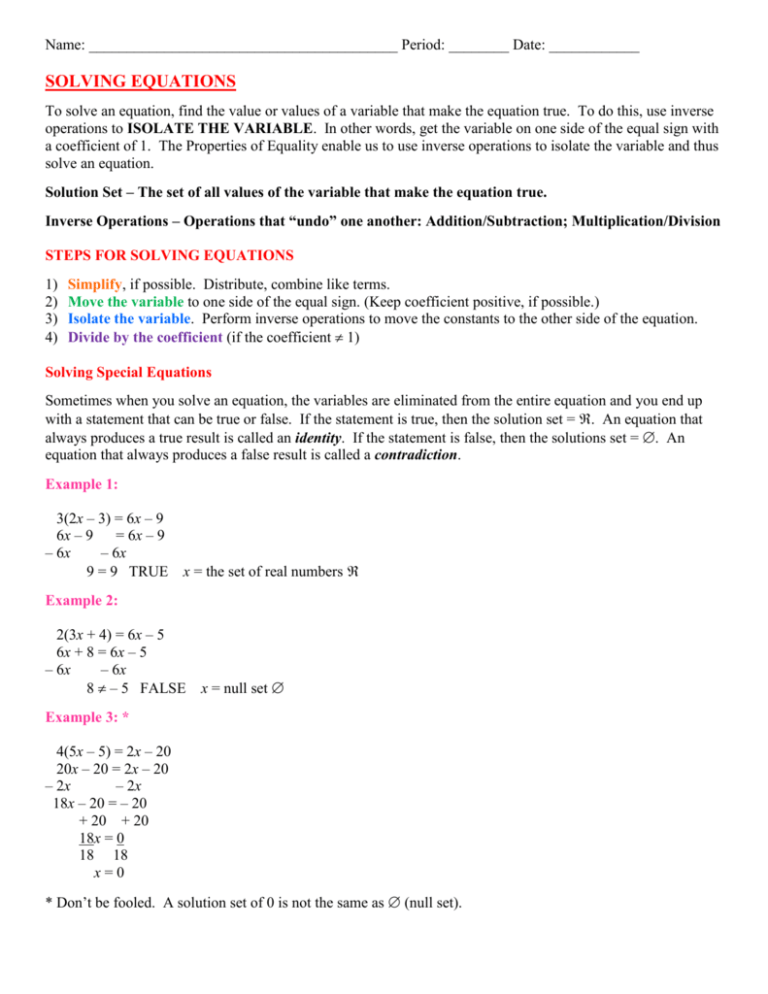
Name: _________________________________________ Period: ________ Date: ____________ SOLVING EQUATIONS To solve an equation, find the value or values of a variable that make the equation true. To do this, use inverse operations to ISOLATE THE VARIABLE. In other words, get the variable on one side of the equal sign with a coefficient of 1. The Properties of Equality enable us to use inverse operations to isolate the variable and thus solve an equation. Solution Set – The set of all values of the variable that make the equation true. Inverse Operations – Operations that “undo” one another: Addition/Subtraction; Multiplication/Division STEPS FOR SOLVING EQUATIONS 1) 2) 3) 4) Simplify, if possible. Distribute, combine like terms. Move the variable to one side of the equal sign. (Keep coefficient positive, if possible.) Isolate the variable. Perform inverse operations to move the constants to the other side of the equation. Divide by the coefficient (if the coefficient 1) Solving Special Equations Sometimes when you solve an equation, the variables are eliminated from the entire equation and you end up with a statement that can be true or false. If the statement is true, then the solution set = . An equation that always produces a true result is called an identity. If the statement is false, then the solutions set = . An equation that always produces a false result is called a contradiction. Example 1: 3(2x – 3) = 6x – 9 6x – 9 = 6x – 9 – 6x – 6x 9 = 9 TRUE x = the set of real numbers Example 2: 2(3x + 4) = 6x – 5 6x + 8 = 6x – 5 – 6x – 6x 8 – 5 FALSE x = null set Example 3: * 4(5x – 5) = 2x – 20 20x – 20 = 2x – 20 – 2x – 2x 18x – 20 = – 20 + 20 + 20 18x = 0 18 18 x=0 * Don’t be fooled. A solution set of 0 is not the same as (null set).

